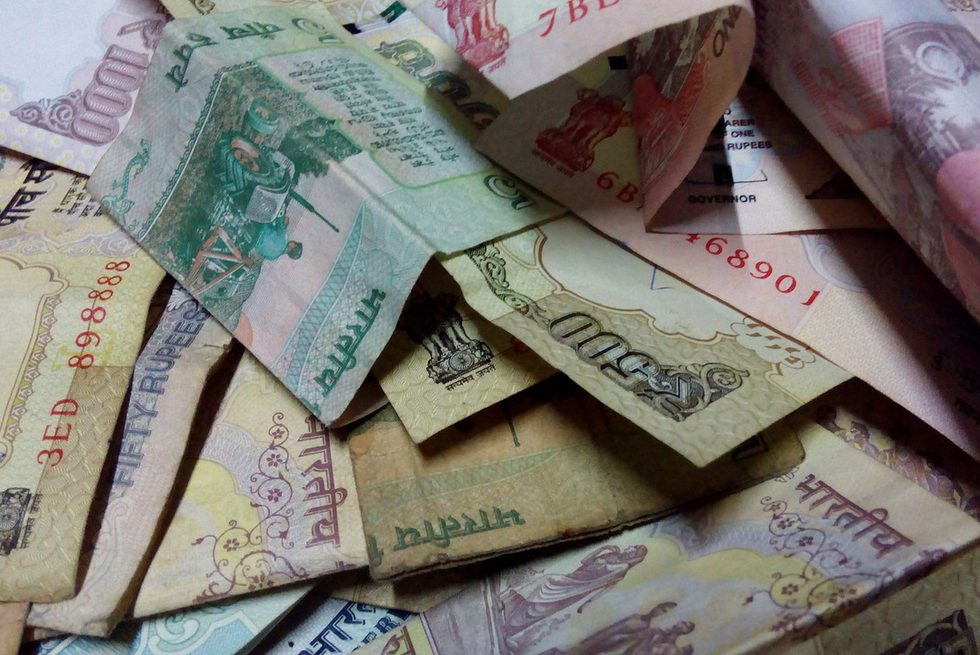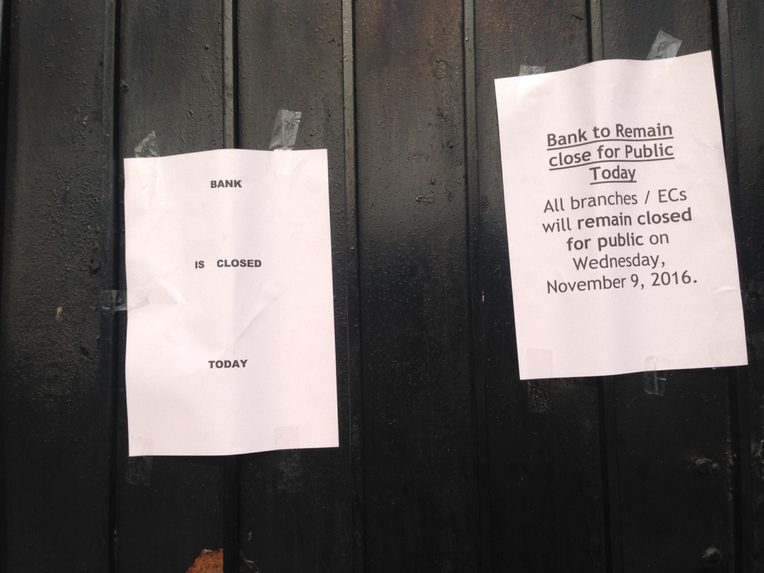Improvising Demonetization in a Kashmiri Bank
From the Series: Demonetization: Critical Responses to India’s Cash(/less) Experiment
From the Series: Demonetization: Critical Responses to India’s Cash(/less) Experiment

On November 9, 2016, I arrived at my fieldsite, a bank branch in Indian-controlled Kashmir, with no idea of what to expect. The prime minister of India had just announced demonetization at 8 p.m. the previous evening. Soon after, the Reserve Bank of India (RBI) issued a notification instructing all banks to observe a “non-business working day” on November 9. Closed to the public, banks were to use this day to report on their existing supply of demonetized notes and to prepare for the unprecedented task that lay ahead: receiving and exchanging all ₹500 and ₹1000 currency notes in circulation, which amounted to approximately 15.4 trillion rupees. As surprised as bankers in India were by the turn of events, bank employees in Kashmir were in a sense better prepared for the emergency situation that would follow—they had, after all, just lived and worked through four months of political turmoil.
Since July 8, when a popular militant commander was killed by the state’s armed forces, Kashmir had been experiencing its most severe political crackdown since 2010. More than ninety civilians had been killed and thousands more blinded and injured. By November, Kashmiris were reeling under severe uncertainty with upwards of ten thousand youth arrests, daily cases of arson at shuttered schools, a government ban on mobile phone and Internet services, curfews, and continuous hartals (general strikes). In the face of this unrest bank branches had limited options: they could choose to remain shut, to consolidate their operations out of a single main branch, or to operate discreetly at early hours of the morning. Bank employees at my fieldsite would travel by circuitous routes to reach work, carry curfew passes, and dress in “home clothes” to avoid unnecessary attention. This climate of normalized crisis and the improvisations it required would inform their response to demonetization.

On the day after the prime minister’s announcement, the nineteen-page RBI notification (referred to as “the circular”) would become the main communication tool binding the banks in Kashmir to the central bank. In it, the RBI gave detailed instructions for “actions to be taken” on November 9 and 10. These included calling back demonetized notes from ATMs, stopping new issuance of the notes, and readying bank staff for the note exchange process.
Copies of the circular floated around the branch in Kashmir and were consulted regularly throughout that first day, but much remained opaque. For example, as a few staff members and I sat in the branch manager’s office while he determined how many boxes of cash needed to be sent to each branch from the currency chest, there was confusion about whether the newly printed ₹2000 note could be issued the next day. The branch had already received boxes of the slim pink notes, but it remained unclear whether they were meant for public issue. Reading the RBI circular aloud in the manager’s office, there seemed to be no mention of this crucial detail. “That’s the problem,” bemoaned one employee, “we don’t have clear instructions.” In that moment, as bankers tried to determine what exactly would constitute legal tender the next day, it became clear how easily upended are the procedures, rules, and daily repetitions upon which banking and finance are based.

The branch reopened to the public on November 10. Approximately twelve hundred customers arrived to exchange old notes for new ones at the initial limit of ₹4000 per person per day. Although there was a separatist-declared general strike in Kashmir that day and the conditions on the streets were still deeply uncertain, the public had no choice but to find their way to the bank. Tense from months of volatility, most people I observed cursed the government but then got in line and waited patiently to convert their currency. They were, by now, long accustomed to arbitrarily announced state decisions—from curfews to night raids to crackdowns.1
Over the next several weeks, as demonetized cash returned swiftly into the banking system, the RBI and central government responded by chaotically issuing daily notifications on altered exchange and withdrawal limits. In total, there would be seventy-four notifications issued in the fifty officially demarcated days of demonetization. Indeed, there were so many changes to the limits that when the note exchange was abruptly suspended on November 24—thirty-six days prior to the initially announced December 31 deadline—both bankers and the public seemed numb to the revoking of yet another promise by the RBI and the state. For many Kashmiris, the farcical discourse of demonetization—premised on ending the region's unrest by cutting off its supposed illicit financing—was slowly losing its own logic.
What does the aftermath of demonetization, then, highlight about banking, especially in contexts where people’s lives are already marked by pervasive uncertainty? As the 2008 financial crisis made clear, the stability and guarantees upon which financial systems operate can be swiftly overturned. Of course, anthropologists and financial commentators have long noted the contingencies of fiat money and its vulnerability to disruption during moments of crisis (Lemon 1998; Maurer 2006; D’Avella 2014). Still, the suddenness and scale of the monetary disruption—the overnight invalidation of 86 percent of currency in circulation—laid bare the fragility of money itself, as well as the state’s power over the economic lives of its subjects.
In the month following the introduction of the new ₹2000 note, rumors abounded that it was only a matter of time before it too would be demonetized. The bankers in Kashmir would not have been the least bit surprised.
1. Crackdowns are a counterinsurgency measure in which security forces conduct a cordon-and-search operation and require all adult men and young boys (and sometimes women) to line up for identification, frisking, and questioning. In the 1990s, at the height of the conflict in Kashmir, crackdowns frequently included a masked informer tasked with identifying alleged militants in the line-up. Shazia Yousuf has written poignantly about the gendered nature of crackdowns.
D’Avella, Nicholas. 2014. “Ecologies of Investment: Crisis Histories and Brick Futures in Argentina.” Cultural Anthropology 29, no. 1: 173–99.
Lemon, Alaina. 1998. “‘Your Eyes are Green Like Dollars’: Counterfeit Cash, National Substance, and Currency Apartheid in 1990s Russia.” Cultural Anthropology 13, no. 1: 22–55.
Maurer, Bill. 2006. “The Anthropology of Money.” Annual Review of Anthropology 35: 15–36.